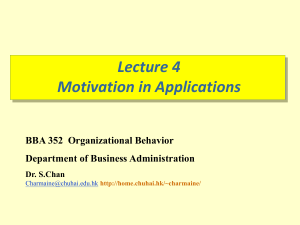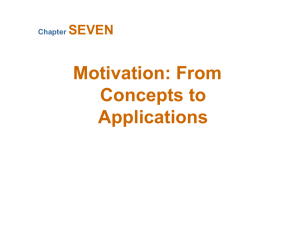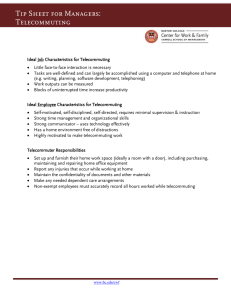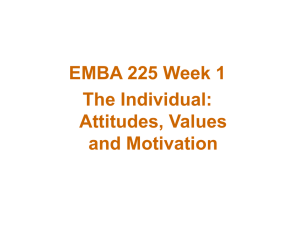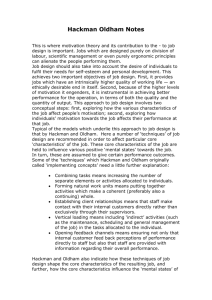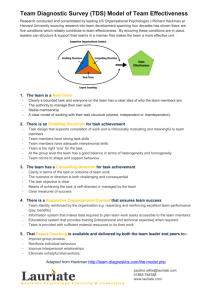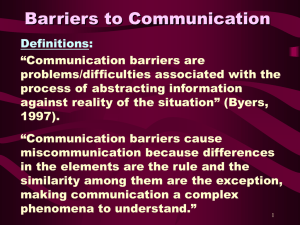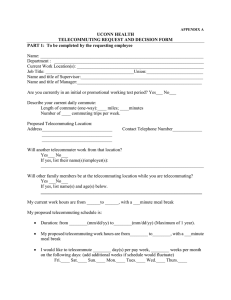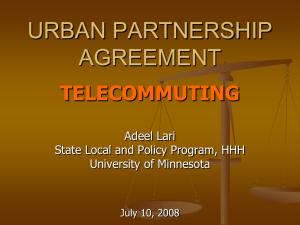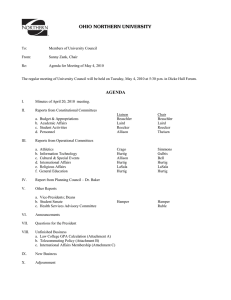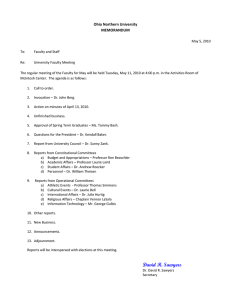Motivation: From Concepts to Application
advertisement
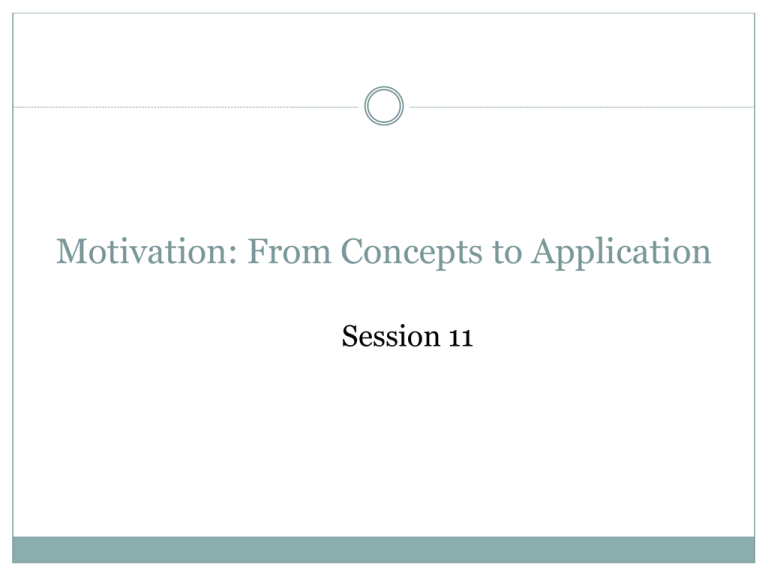
Motivation: From Concepts to Application Session 11 Job Design Job Characteristics Model (Hackman Job Rotation Job Enlargement Job Enrichment & Oldham) The Job Characteristics Model Source: J.R. Hackman and G.R. Oldham, Work Design (excerpted from pp. 78–80). © 1980 by Addison-Wesley Publishing Co., Inc. Reprinted by permission of Addison-Wesley Longman, Inc. Contd Motivating Potential Score (MPS) The core dimensions can be combined into a single predictive index Job Design and Scheduling Job Rotation The periodic shifting of a worker from one task to another. Job Enlargement The horizontal expansion of jobs. Job Enrichment The vertical expansion of jobs. Guidelines for Enriching a Job Source: J.R. Hackman and J.L. Suttle, eds., Improving Life at Work (Glenview, IL: Scott Foresman, 1977), p. 138. Alternative Work Arrangements Flexi Time Job Sharing Telecommuting Alternative Work Arrangements Flextime Employees work during a common core time period each day but have discretion in forming their total workday from a flexible set of hours outside the core. Job Sharing The practice of having two or more people split a 40-hour-a-week job. Contd Telecommuting Employees do their work at home on a computer that is linked to their office. Categories of telecommuting jobs: • Routine information handling tasks • Mobile activities • Professional and other knowledge-related tasks Telecommuting Advantages Larger labor pool Higher productivity Less turnover Improved morale Reduced office-space costs Disadvantages (Employer) Less direct supervision of employees Difficult to coordinate teamwork Difficult to evaluate nonquantitative performance Ability and Opportunity Performance = Ability * Motivation Opportunity to perform – Performance = Ability * Motivation* Opportunity to perform Employee Involvement Participative Management Representative Participation Quality Circles Linking Employee Involvement Programs and Motivation Theories What is Employee Involvement? Employee Involvement Program A participative process that uses the entire capacity of employees and is designed to encourage increased commitment to the organization’s success. Examples of Employee Involvement Programs Participative Management A process in which subordinates share a significant degree of decision-making power with their immediate superiors. Examples of Employee Involvement Programs (cont’d) Representative Participation Workers participate in organizational decision making through a small group of representative employees. Works Councils Groups of nominated or elected employees who must be consulted when management makes decisions involving personnel. Board Representative A form of representative participation; employees sit on a company’s board of directors and represent the interests of the firm’s employees. Examples of Employee Involvement Programs (cont’d) Quality Circle A work group of employees who meet regularly to discuss their quality problems, investigate causes, recommend solutions, and take corrective actions. Rewarding Employees What to Pay – Establishing Pay Structure Internal Equity (Job Evaluation) External Equity (Competitor’s pay) How to Pay – Variable Pay Programs Skill based Pay Programs Flexible Benefits Variable Pay Programs Piece-Rate Pay Merit-Based Pay Bonuses Profit-Sharing Plans Gain Sharing Employee Stock Ownership Plans (ESOP) Skill-Based Pay Plans Pay levels are based on how many skills employees have or how many jobs they can do. Benefits of Skill-based Pay Plans: 1. Provides staffing flexibility. 2. Facilitates communication across the organization. 3. Meets the needs of employees for advancement (without promotion). 4. Leads to performance improvements. Skill-Based Pay Plans (cont’d) Drawbacks of Skill-based Pay Plans: 1. Lack of additional learning opportunities that will increase employee pay. 2. Continuing to pay employees for skills that have become obsolete. 3. Paying for skills which are of no immediate use to the organization. 4. Paying for a skill, not for the level of employee performance for the particular skill. Flexible Benefits Employees tailor their benefit program to meet their personal need by picking and choosing from a menu of benefit options. Modular Plans: predesigned benefits packages for specific groups of employees. Core-Plus Plans: a core of essential benefits and a menu-like selection of other benefit options. Flexible Spending Plans: allow employees to use their tax-free benefit dollars purchase benefits and pay service premiums. Employee Recognition Programs Types of programs Personal attention Expressing interest Approval Appreciation for a job well done Benefits of programs Fulfill employees’ desire for recognition. Encourages repetition of desired behaviors. Enhance group/team cohesiveness and motivation. Encourages employee suggestions for improving processes and cutting costs. Implications for Managers Motivating Employees in Organizations Recognize individual differences Use goals and feedback Allow employees to participate in decisions that affect them Link rewards to performance Check the system for equity
